Cladding Options NZ: Exterior Cladding Ideas & Costs for 2025 Homes
Hey Kiwis, if you’re in Auckland and thinking about freshening up your home’s exterior—whether it’s a classic villa in Mt Eden battling humidity or a coastal pad in Takapuna fighting salty winds—picking the right cladding in 2025 is key for weather protection, low maintenance, and boosting that curb appeal without breaking the bank. Options range from budget vinyl at $80/m² to premium stone up to $400/m², with trends leaning towards sustainable, durable picks like fibre cement or metal that handle our wild climate.
What’s the Best Cladding Material for Auckland’s Humid Coastal Vibes?
Fibre cement like James Hardie’s Linea boards is a standout—super weather-resistant, low-maintenance, and mimics timber without the hassle, perfect for salty spots like Mission Bay or Devonport. Costs $120–$220/m² installed, and it shrugs off moisture with a cavity system. Metal cladding (aluminium from Metalcraft or Dimond) is another winner for corrosion resistance in windy North Shore homes, around $130–$280/m²—dents easy but lasts ages. For traditional bungalows in Remuera or Ponsonby, treated timber weatherboards (Hermpac cedar) give that warm Kiwi look at $100–$250/m², just needs staining every 5-10 years to beat UV and rain.
How Do You Choose Cladding That Won’t Cost a Fortune Long-Term in NZ?
Budget-wise, vinyl like Palliside is the cheapest at $80–$150/m²—moisture-proof and low upkeep, great for rentals or quick flips in Henderson. Brick or masonry ($150–$300/m²) screams durability for family homes in Ellerslie, with fire resistance and thermal mass cutting bills. Stucco offers seamless Mediterranean flair ($140–$260/m²) but needs proper installation to avoid cracks in quake-prone areas. Composites or AAC panels ($120–$250/m²) are rising for eco-conscious renos, sustainable and energy-efficient. Pro tip from the team: Factor hidden costs like foundations for heavy stone ($200–$400/m²) and always use cavities for ventilation in our damp winters.
Which Cladding Trends Are Hot for Kiwi Homes Right Now?
Sustainability’s big—FSC timber or recycled composites for green builds in Titirangi. Low-maintenance metals and fibre cement suit busy Auckland lifestyles, while mixed materials add modern punch to Grey Lynn spots. Energy-efficient options like insulated AAC help with our cold snaps, and coastal-adapted aluminium fights salt corrosion.
Fancy giving your place a tough, stylish exterior upgrade? Reach out to Superior Renovations for a free yarn—what’s your cladding dilemma?
Why Cladding Matters for Your New Zealand Home in 2025
Choosing the right cladding for your home isn’t just about aesthetics—it’s about protecting your investment from New Zealand’s unpredictable weather, boosting energy efficiency, and enhancing curb appeal. Whether you’re building a new home in Auckland’s humid coastal climate or renovating a villa in Christchurch’s cooler south, cladding options NZ offer a variety of materials, styles, and price points to suit every need. From timeless timber weatherboards to modern metal panels, the right cladding can transform your home’s look while ensuring durability and low maintenance.
In 2025, cladding trends in New Zealand emphasize sustainability, low-maintenance materials, and innovative designs that blend functionality with style. With advancements in materials like fibre cement, eco-friendly timber, and high-performance aluminium, homeowners have more choices than ever. But with so many options, how do you decide what’s best for your home? This comprehensive guide dives into the most popular exterior cladding options available in New Zealand, their costs, benefits, and drawbacks, helping you make an informed decision for your next project.
At Superior Renovations, we understand the importance of selecting wall cladding that aligns with your budget, aesthetic preferences, and the unique demands of New Zealand’s climate. In this guide, we’ll explore types of cladding like stucco cladding, brick, metal, and more, while highlighting the cheapest exterior cladding options and the latest trends for 2025. Whether you’re after a sleek, modern look or a classic Kiwi aesthetic, we’ve got you covered with practical tips, cost breakdowns, and expert insights.
Curious about how much your
Recladding Project would cost?
Try our recladding cost calculator tool
Need ideas? Check out our Kitchen Design Gallery or dive into our Bathroom Design Gallery for inspiration!
1. Understanding Cladding and Its Importance in New Zealand
Cladding serves as your home’s first line of defense against New Zealand’s diverse and often harsh weather conditions. From Auckland’s humid summers to Wellington’s windy gusts and Dunedin’s chilly winters, the right exterior cladding protects your home from moisture, UV rays, and temperature fluctuations. Beyond protection, cladding enhances your home’s aesthetic, increases property value, and can improve energy efficiency by providing insulation. In 2025, with rising construction costs and a focus on sustainable building, choosing the right cladding options NZ is more critical than ever.
What is Cladding?
Cladding refers to the external layer of material applied to a building’s walls to provide protection and aesthetic appeal. It acts as a shield against environmental elements while contributing to the structural integrity and thermal performance of your home. Wall cladding comes in various materials, including timber, brick, fibre cement, metal, and vinyl, each offering unique benefits suited to New Zealand’s varied climates.
Why Cladding Matters in NZ
New Zealand’s climate presents unique challenges for homeowners. Coastal areas face salt-laden air that can corrode certain materials, while alpine regions demand cladding that withstands freezing temperatures. Additionally, the country’s commitment to sustainability in 2025 means eco-friendly cladding options, like responsibly sourced timber from Hermpac or low-maintenance fibre cement from James Hardie, are gaining popularity. Choosing the right cladding ensures your home remains durable, energy-efficient, and visually appealing for decades.
Key Factors to Consider When Choosing Cladding
Before diving into specific types of cladding, consider these factors to guide your decision:
- Durability: Will the material withstand NZ’s weather conditions, including rain, wind, and UV exposure?
- Maintenance: How much upkeep does the cladding require? Low-maintenance options like Metalcraft’s metal cladding or Palliside’s vinyl are ideal for busy homeowners.
- Cost: What’s your budget? From the cheapest exterior cladding options like weatherboards to premium choices like craftstone, costs vary significantly.
- Aesthetics: Does the cladding match your home’s architectural style? Modern homes may suit sleek aluminium from Nuwall, while traditional villas pair well with classic brick from Midland Brick.
- Sustainability: Are the materials eco-friendly? Products like Weathertex’s timber cladding or ITI Timspec’s FSC-certified wood prioritize environmental responsibility.
- Installation: How complex is the installation process? Systems like Specialized’s EZpanel or Vulcan’s Ultraclad often require professional expertise but offer long-term benefits.
This section sets the foundation for understanding why cladding is a critical choice for New Zealand homeowners in 2025. By weighing these factors, you can narrow down the best exterior cladding options for your project, whether you’re after durability, affordability, or a specific aesthetic.
2. Popular Cladding Options in New Zealand for 2025
With a wide range of cladding options NZ available, selecting the right material for your home involves balancing aesthetics, durability, cost, and maintenance. In 2025, New Zealand homeowners can choose from traditional materials like timber and brick to innovative solutions like fibre cement and metal panels. Below, we explore the most popular types of cladding, highlighting their features, benefits, drawbacks, and approximate costs per square meter (NZD, as of 2025). Each option is tailored to suit New Zealand’s unique climate and architectural trends, ensuring you find the perfect fit for your home.
-
Timber Weatherboards
Timber weatherboards remain a Kiwi favorite for their classic charm and versatility. Brands like Hermpac and ITI Timspec offer sustainably sourced options such as Western Red Cedar and Accoya, which are treated for durability in NZ’s humid and coastal conditions.
- Benefits: Natural aesthetic, eco-friendly (especially FSC-certified options), excellent insulation, and customizable with paint or stain.
- Drawbacks: Requires regular maintenance (staining or painting every 5-10 years), susceptible to moisture damage if not properly treated.
- Cost: $100–$250/m², depending on timber type and treatment.
- Best For: Traditional villas, bungalows, or homes seeking a warm, natural look.

https://taurikosawmill.co.nz/timber_profile/horizontal-weatherboard/
-
Brick and Masonry
Brick cladding, such as that offered by Midland Brick or Premier Group, provides a timeless, robust option for New Zealand homes. Its solid construction withstands harsh weather and requires minimal upkeep.
- Benefits: Highly durable, fire-resistant, low maintenance, and excellent thermal mass for energy efficiency.
- Drawbacks: Higher upfront cost, heavier weight requires stronger foundations, limited color options compared to other materials.
- Cost: $150–$300/m², including installation.
- Best For: Permanent homes, coastal properties, or those prioritizing longevity.
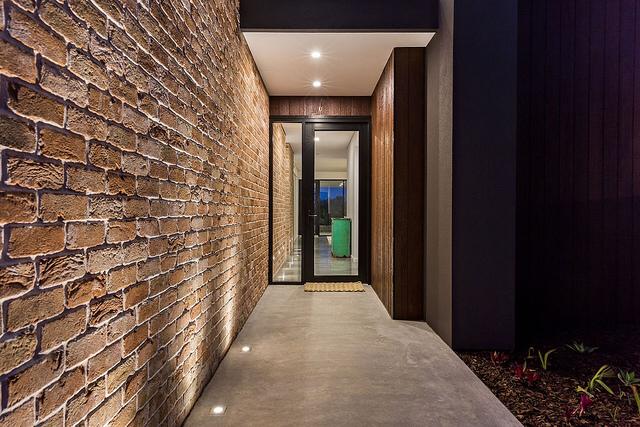
https://likestone.ie/interior/
-
Fibre Cement Cladding
Fibre cement, popularized by James Hardie’s Linea Weatherboard and Scyon range, combines durability with modern aesthetics. It mimics timber or other textures but requires less maintenance.
- Benefits: Weather-resistant, low maintenance, fire-resistant, and versatile in design (e.g., James Hardie’s Axent Trim for sleek lines).
- Drawbacks: Installation can be complex, and upfront costs are moderate to high.
- Cost: $120–$220/m², depending on the product and finish.
- Best For: Modern homes, coastal areas, or homeowners seeking a low-maintenance alternative to timber.
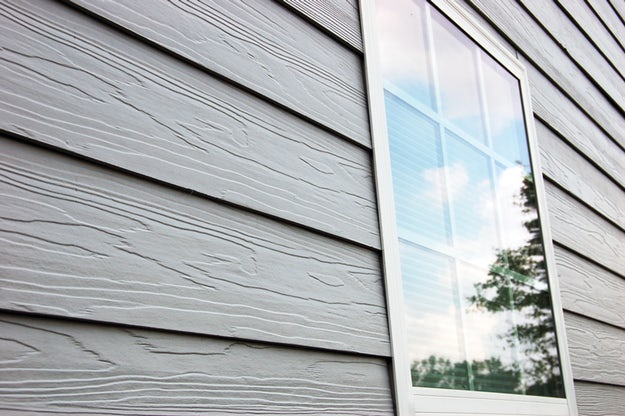
https://architizer.com/blog/product-guides/product-guide/eaktna-fiber-cement-cladding/
-
Metal Cladding
Metal cladding, such as Metalcraft’s corrugated profiles or Dimond’s sleek tray systems, is gaining traction for its durability and contemporary look. Aluminium and steel options from Nuwall or Vulcan’s Ultraclad are particularly popular in 2025.
- Benefits: Extremely durable, low maintenance, recyclable, and ideal for coastal environments due to corrosion resistance.
- Drawbacks: Can dent or scratch, higher initial cost, and may not suit traditional home styles.
- Cost: $130–$280/m², depending on material (steel vs. aluminium) and finish.
- Best For: Modern or industrial-style homes, coastal properties.

https://proformsteel.co.nz/battenform-metal-cladding/
-
Vinyl Cladding
Vinyl cladding, like Palliside’s weatherboards, offers one of the cheapest exterior cladding options for NZ homeowners. It’s lightweight and easy to install, making it a budget-friendly choice.
- Benefits: Low cost, low maintenance, resistant to moisture and insects, and available in various colors.
- Drawbacks: Less durable than brick or metal, can fade over time, and may not appeal to those seeking a premium look.
- Cost: $80–$150/m², including installation.
- Best For: Budget-conscious renovations, rental properties, or temporary structures.
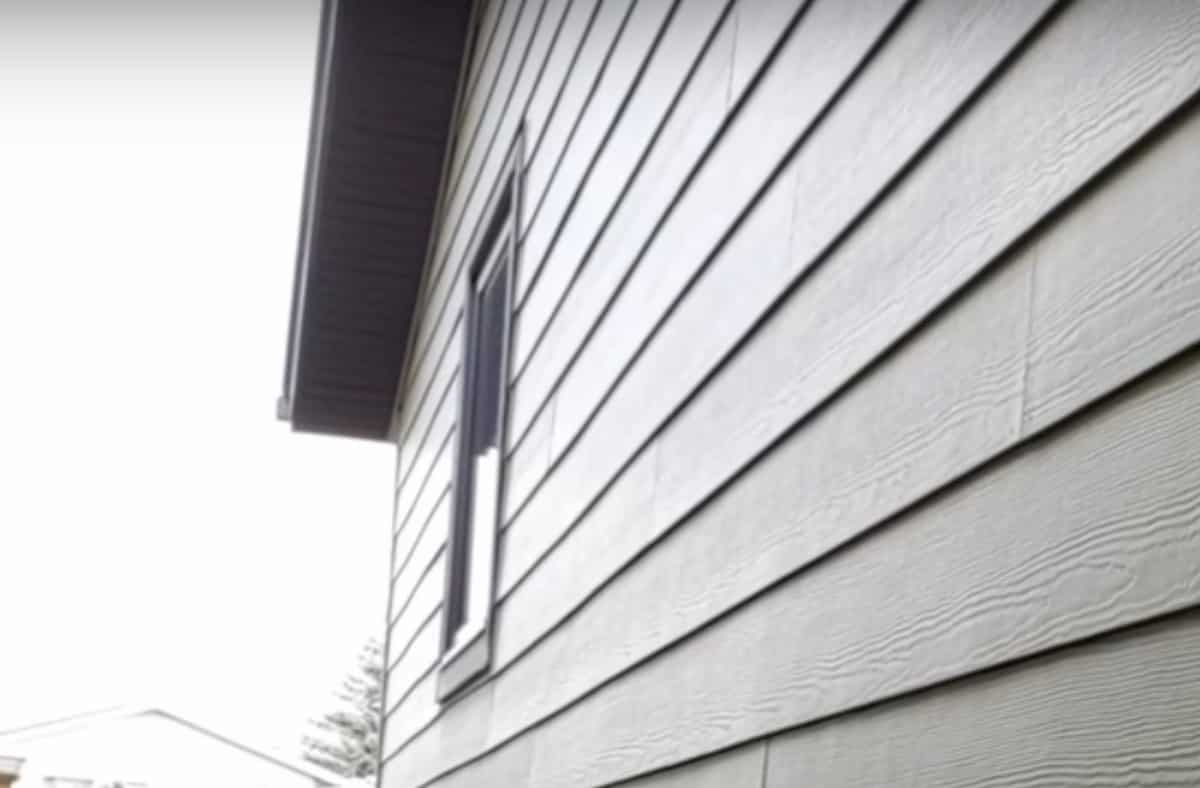
https://www.ecospecifier.com.au/vinyl-wall-cladding/
-
Stucco Cladding
Stucco cladding, a plaster-based system, provides a smooth, textured finish popular in Mediterranean-style homes. Companies like JSC offer specialized stucco solutions for NZ’s climate.
- Benefits: Seamless finish, good insulation, and customizable textures.
- Drawbacks: Prone to cracking if not installed correctly, requires regular maintenance to prevent moisture issues.
- Cost: $140–$260/m², depending on the system and finish.
- Best For: Homes aiming for a classic or European aesthetic.
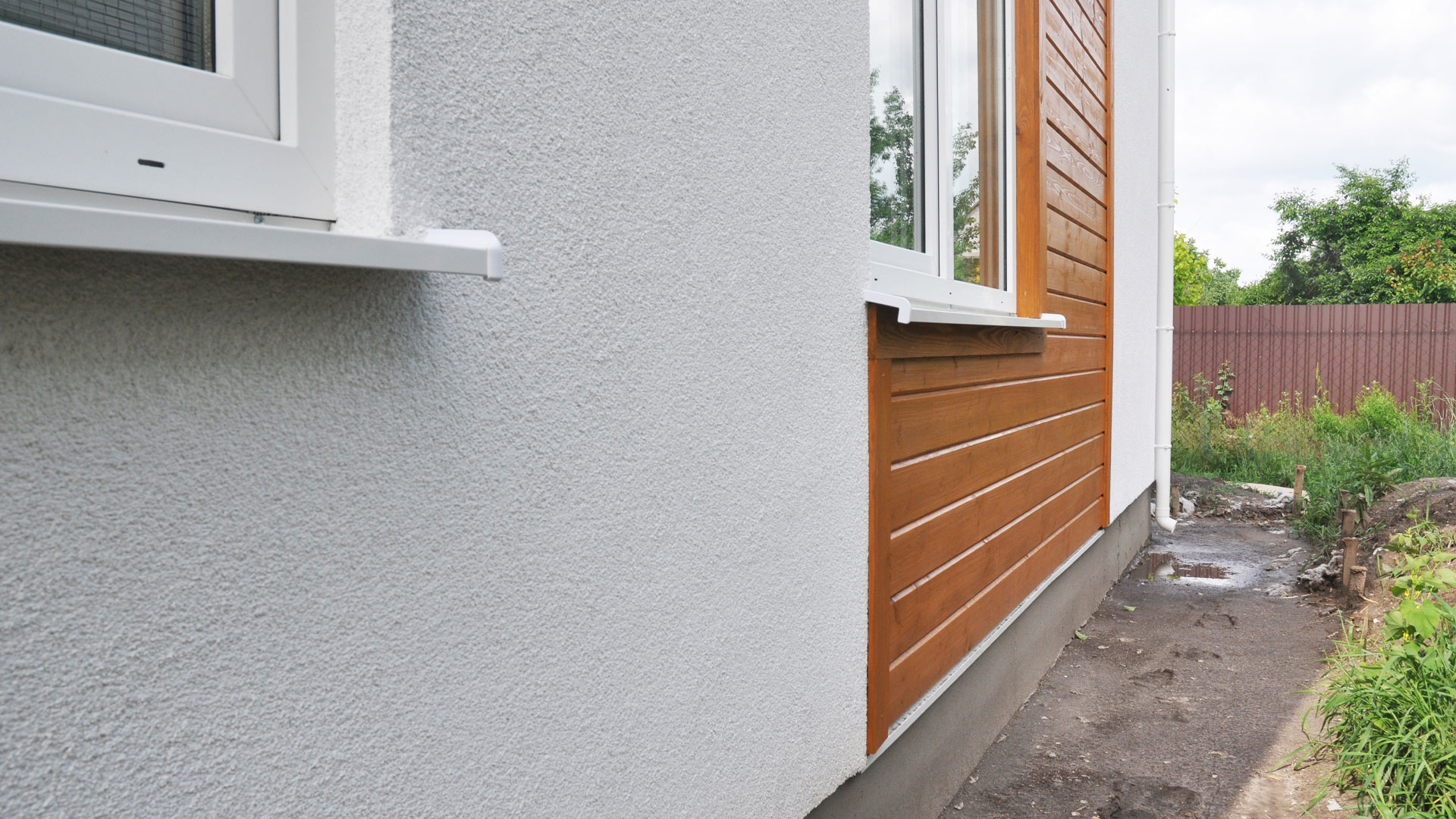
https://www.trademe.co.nz/c/property/article/should-i-buy-a-home-with-roughcast-cladding-reasons-to-think-twice
-
Stone and Stone Veneer
Craftstone’s natural and manufactured stone cladding adds a luxurious, earthy feel to homes. It’s ideal for feature walls or high-end projects.
- Benefits: Highly durable, low maintenance, and adds significant aesthetic value.
- Drawbacks: Expensive, heavy, and requires skilled installation.
- Cost: $200–$400/m², depending on natural vs. manufactured stone.
- Best For: Luxury homes, feature walls, or properties in alpine regions.
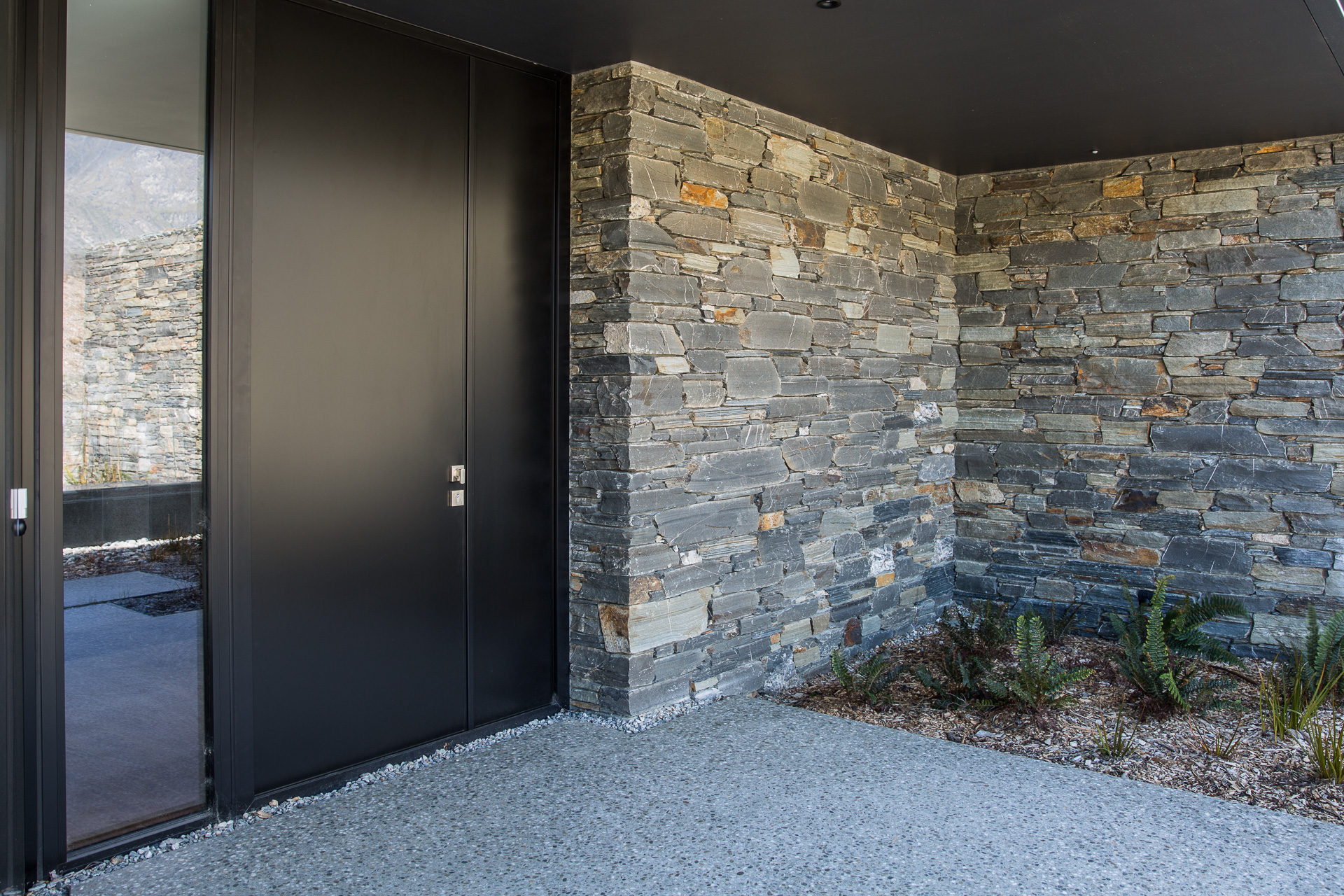
https://wanakastone.co.nz/
-
AAC (Autoclaved Aerated Concrete) Panels
Specialized’s EZpanel and other AAC systems are lightweight concrete panels that offer excellent insulation and fire resistance, making them a rising star in 2025.
- Benefits: Energy-efficient, fire-resistant, and quick to install.
- Drawbacks: Higher upfront cost, limited aesthetic flexibility compared to timber or metal.
- Cost: $150–$250/m², including installation.
- Best For: Modern homes prioritizing energy efficiency and fire safety.
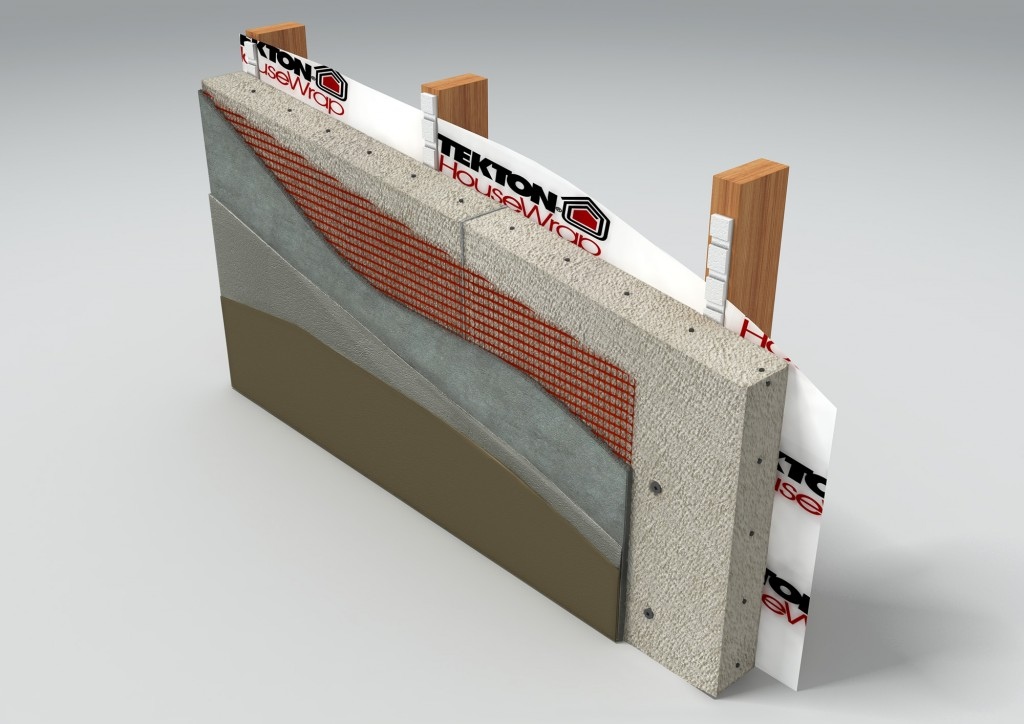
www.specialized.co.nz
-
Composite Cladding
Composite cladding, like Weathertex or Millboard’s Envello range, blends natural and synthetic materials for a durable, eco-friendly option.
- Benefits: Low maintenance, sustainable, and resistant to weathering.
- Drawbacks: Can be pricier than vinyl, limited texture options.
- Cost: $120–$200/m², depending on the brand.
- Best For: Eco-conscious homeowners seeking a modern, low-maintenance solution.

https://www.placemakers.co.nz/online/projects/cladding/pre-finished
This section covers the most popular exterior cladding options in New Zealand for 2025, providing a detailed overview of each material’s pros, cons, and costs. By understanding these options, you can better align your choice with your home’s style, budget, and environmental needs.
3. Comparing Costs and Cheapest Exterior Cladding Options in NZ for 2025
When planning a renovation or new build, budget plays a significant role in selecting the right cladding options NZ. While aesthetics and durability matter, finding cost-effective solutions that don’t compromise quality is a priority for many homeowners. In this section, we break down the costs of various types of cladding, highlight the cheapest exterior cladding options available in New Zealand for 2025, and provide tips to maximize value without sacrificing performance. All costs are approximate (NZD per square meter, including installation) and reflect 2025 market trends.
Cost Breakdown of Cladding Options
Understanding the full cost of exterior cladding involves considering material prices, labor, and long-term maintenance. Below is a detailed comparison of the cladding types discussed earlier, with insights into their affordability and value.
| Cladding Type | Cost Range ($/m²) | Key Considerations |
|---|---|---|
| Timber Weatherboards | $100–$250 | Mid-range cost; varies by wood type (e.g., Hermpac’s Western Red Cedar vs. pine). Requires staining every 5-10 years, increasing long-term costs. |
| Brick and Masonry | $150–$300 | Higher upfront cost (e.g., Midland Brick) due to materials and labor. Minimal maintenance makes it cost-effective long-term. |
| Fibre Cement | $120–$220 | Affordable with low maintenance (e.g., James Hardie’s Linea Weatherboard). Popular for modern homes. |
| Metal Cladding | $130–$280 | Cost varies by material (e.g., Metalcraft/Dimond steel vs. aluminium). Aluminium (e.g., Nuwall) is pricier but corrosion-resistant for coastal areas. |
| Vinyl Cladding | $80–$150 | Cheapest option (e.g., Palliside). Low material/installation costs but may fade, requiring earlier replacement. |
| Stucco Cladding | $140–$260 | Moderately priced (e.g., JSC systems). Requires careful installation to avoid cracking or moisture-related repairs. |
| Stone and Stone Veneer | $200–$400 | Premium option (e.g., Craftstone). High cost due to aesthetics and complex installation, but adds significant property value. |
| AAC Panels | $150–$250 | Cost-competitive (e.g., Specialized’s EZpanel). Energy-efficient, with long-term savings on heating/cooling. |
| Composite Cladding | $120–$200 | Mid-range with low maintenance (e.g., Weathertex, Millboard’s Envello). Cost-effective for eco-conscious homeowners. |
Cheapest Exterior Cladding Options
For budget-conscious homeowners, the following cladding options offer affordability without compromising too much on quality:
- Vinyl Cladding ($80–$150/m²): Palliside’s vinyl weatherboards are the most cost-effective choice, ideal for renovations or rental properties. They’re quick to install and resist moisture, though they may not match the durability of brick or metal.
- Timber Weatherboards ($100–$150/m² for pine): Opting for affordable timber like pine, available through ITI Timspec, keeps costs low. Regular maintenance is required, but the initial investment is budget-friendly.
- Fibre Cement ($120–$160/m² for basic options): James Hardie’s more affordable fibre cement products provide a durable, low-maintenance alternative to timber at a similar price point.
Tips for Saving on Cladding Costs
- Compare Quotes: Source multiple quotes from suppliers like Premier Group or JSC to find competitive pricing.
- Choose Local Materials: Locally sourced timber from Hermpac or bricks from Midland Brick can reduce shipping costs.
- Opt for Low-Maintenance Materials: Vinyl or fibre cement minimizes future expenses on repairs or repainting.
- Consider DIY-Friendly Options: Vinyl and some fibre cement systems are easier for skilled DIYers to install, saving on labor costs.
- Plan for Long-Term Value: Investing slightly more in durable materials like metal or brick can reduce maintenance costs over time.
Hidden Costs to Watch For
While chasing the cheapest exterior cladding, be mindful of hidden costs:
- Installation Errors: Poorly installed stucco cladding or timber can lead to costly repairs due to moisture damage.
- Maintenance: Timber and stucco require regular upkeep, which adds to long-term costs.
- Foundation Upgrades: Heavy materials like brick or stone may require stronger foundations, increasing initial expenses.
By comparing these costs and focusing on affordable yet durable options, you can select wall cladding that fits your budget while meeting New Zealand’s demanding environmental conditions. In 2025, vinyl and basic fibre cement stand out as the cheapest exterior cladding options, while brick and metal offer long-term value for those willing to invest more upfront.
4. Cladding Trends and Innovations in New Zealand for 2025
As New Zealand’s construction industry evolves, cladding options NZ are embracing cutting-edge trends and innovations that prioritize sustainability, energy efficiency, and modern aesthetics. In 2025, homeowners and builders are leaning toward materials and designs that not only enhance a home’s appearance but also align with environmental goals and technological advancements. This section explores the latest cladding trends, innovative products, and how brands like James Hardie, Hermpac, and Metalcraft are shaping the future of exterior cladding in New Zealand.
-
Sustainable and Eco-Friendly Cladding
Sustainability is a driving force in 2025, with homeowners seeking eco-conscious cladding options that reduce environmental impact. Brands like Weathertex and ITI Timspec lead the way with FSC-certified timber and composite materials made from recycled content.
- Why It’s Trending: New Zealand’s focus on reducing carbon footprints aligns with global sustainability goals. Cladding materials like Hermpac’s Accoya (treated for durability with non-toxic processes) and Weathertex’s carbon-neutral timber boards appeal to eco-conscious homeowners.
- Examples: Millboard’s Envello composite cladding uses recycled materials, while James Hardie’s fibre cement products are designed for longevity, reducing the need for frequent replacements.
- Tip: Look for certifications like FSC or Environmental Choice NZ when choosing sustainable wall cladding.
-
Low-Maintenance and Durable Materials
Busy homeowners in 2025 prioritize cladding that requires minimal upkeep. Metal cladding from Metalcraft and Dimond, as well as vinyl options from Palliside, offer durability without the need for regular painting or sealing.
- Why It’s Trending: With rising maintenance costs, low-maintenance cladding saves time and money. Aluminium options like Nuwall’s systems resist corrosion in coastal areas, while fibre cement from James Hardie withstands NZ’s harsh weather.
- Examples: Vulcan’s Ultraclad aluminium cladding and Specialized’s EZpanel AAC systems are engineered for minimal maintenance and long lifespans.
- Tip: Pair low-maintenance cladding with professional installation to maximize durability.
-
Modern and Minimalist Aesthetics
Sleek, minimalist designs dominate New Zealand’s architectural landscape in 2025, with cladding options like metal panels and smooth-textured fibre cement leading the charge.
- Why It’s Trending: Modern homes in Auckland and Wellington favor clean lines and bold finishes. Metal tray systems from Dimond and James Hardie’s Scyon Axent Trim offer sharp, contemporary looks.
- Examples: Nuwall’s aluminium panels create seamless, modern facades, while Craftstone’s slim stone veneers add subtle elegance to feature walls.
- Tip: Combine smooth cladding with contrasting textures (e.g., timber accents) for a balanced, modern aesthetic.
-
Energy-Efficient Cladding Systems
Energy efficiency is a key consideration in 2025, with cladding systems like AAC panels and insulated metal panels gaining popularity for their thermal performance.
- Why It’s Trending: Rising energy costs and stricter building codes push homeowners toward cladding that improves insulation. Specialized’s EZpanel AAC panels offer excellent thermal resistance, reducing heating and cooling costs.
- Examples: James Hardie’s fibre cement with integrated insulation and Vulcan’s Ultraclad with thermal breaks enhance energy efficiency.
- Tip: Combine energy-efficient cladding with proper insulation to meet NZ’s Homestar or Green Star standards.
-
Textured and Mixed-Material Designs
In 2025, combining different cladding materials creates dynamic, visually appealing facades. Mixing timber with metal or stone with fibre cement adds depth and character to homes.
- Why It’s Trending: Mixed-material designs allow homeowners to express individuality while enhancing durability. For example, pairing Hermpac’s cedar weatherboards with Craftstone’s stone veneer creates a striking contrast.
- Examples: Premier Group’s brick combined with Weathertex’s textured composite panels offers a blend of tradition and modernity.
- Tip: Work with a designer to ensure mixed materials complement your home’s architecture.
-
Smart Cladding Technologies
Emerging technologies, such as self-cleaning coatings and integrated solar panels, are starting to influence cladding choices in NZ.
- Why It’s Trending: Innovations like self-cleaning metal cladding from Metalcraft reduce maintenance, while solar-integrated cladding (still in early adoption) aligns with NZ’s renewable energy goals.
- Examples: Some aluminium systems from Nuwall feature coatings that repel dirt, while experimental products from global markets hint at future solar cladding options.
- Tip: Stay informed about new products through suppliers like JSC or industry expos for the latest innovations.
-
Coastal-Adapted Cladding
With many New Zealand homes located near the coast, corrosion-resistant cladding is a top trend in 2025. Aluminium and fibre cement are particularly suited to salty, humid environments.
- Why It’s Trending: Coastal areas like Auckland and the Bay of Plenty require materials that resist salt corrosion. Nuwall’s aluminium and James Hardie’s fibre cement are engineered for these conditions.
- Examples: Metalcraft’s Colorsteel and Palliside’s vinyl cladding offer affordable, corrosion-resistant options.
- Tip: Ensure proper sealing and ventilation to extend the lifespan of coastal cladding NZ.
These trends highlight how cladding options NZ are evolving to meet modern demands for sustainability, efficiency, and style. By choosing innovative materials from trusted brands like James Hardie, Hermpac, or Metalcraft, you can future-proof your home while staying on trend in 2025.
5. Choosing the Right Cladding for Your New Zealand Home
Selecting the perfect cladding options NZ for your home requires careful consideration of your location, budget, architectural style, and long-term goals. New Zealand’s diverse climates and architectural trends demand exterior cladding that not only looks great but also performs under specific environmental conditions. In this section, we guide you through the decision-making process, offering practical advice on matching cladding to your home’s needs, climate considerations, and tips for working with professionals like Superior Renovations to ensure a flawless installation.
Step 1: Assess Your Home’s Needs
Before choosing exterior cladding, evaluate your home’s specific requirements:
- Architectural Style: Does your home have a traditional Kiwi villa, a modern minimalist design, or a coastal bach aesthetic? For example, Hermpac’s timber weatherboards suit classic homes, while Dimond’s metal tray systems complement contemporary builds.
- Purpose: Are you renovating for resale, building a forever home, or upgrading a rental property? Brick from Midland Brick adds long-term value, while Palliside’s vinyl is ideal for cost-effective rentals.
- Maintenance Commitment: How much time and money are you willing to spend on upkeep? Low-maintenance options like James Hardie’s fibre cement or Metalcraft’s Colorsteel suit busy homeowners.
- Budget: Determine your budget upfront. Vinyl ($80–$150/m²) and basic timber ($100–$150/m²) are among the cheapest exterior cladding options, while stone ($200–$400/m²) suits premium projects.
Step 2: Consider New Zealand’s Climate
New Zealand’s varied climates significantly influence cladding performance:
- Coastal Areas (Auckland, Bay of Plenty): Salt-laden air demands corrosion-resistant materials like Nuwall’s aluminium, Metalcraft’s Colorsteel, or James Hardie’s fibre cement. Avoid untreated timber unless properly sealed.
- Windy Regions (Wellington): Durable, secure cladding like brick (Premier Group) or AAC panels (Specialized’s EZpanel) withstands high winds.
- Cold and Wet Areas (South Island, Central Plateau): Insulated options like Vulcan’s Ultraclad or Weathertex’s composite cladding provide thermal efficiency and moisture resistance.
- Sunny Regions (Hawke’s Bay, Nelson): UV-resistant materials like fibre cement or vinyl prevent fading, while stucco cladding from JSC requires UV-protective coatings.
Step 3: Match Cladding to Your Aesthetic Goals
Your cladding choice should enhance your home’s visual appeal:
- Traditional Homes: Timber weatherboards (Hermpac’s cedar) or brick (Midland Brick) maintain a classic Kiwi look.
- Modern Homes: Sleek metal panels (Dimond or Nuwall) or smooth fibre cement (James Hardie’s Scyon range) create clean, minimalist lines.
- Luxury Homes: Craftstone’s stone veneer or composite cladding like Millboard’s Envello adds sophistication.
- Mixed Aesthetics: Combine materials, such as Weathertex’s composite with Craftstone’s stone accents, for a unique, modern-traditional blend.
Step 4: Evaluate Installation and Professional Support
Proper installation is critical to wall cladding performance. Poorly installed stucco cladding or timber can lead to moisture issues, while heavy materials like brick require structural considerations.
- Work with Experts: Partner with professionals like Superior Renovations for precise installation. Brands like Specialized (EZpanel) and JSC (stucco) often recommend certified installers.
- Check Building Codes: Ensure your cladding complies with New Zealand’s Building Code (NZBC) for weather-tightness and fire safety. For example, James Hardie’s fibre cement meets stringent fire-resistance standards.
- Plan for Ventilation: Proper ventilation systems, especially for timber or stucco, prevent moisture buildup. Suppliers like Hermpac provide guidance on cavity systems.
Step 5: Plan for Long-Term Performance
Consider the lifespan and maintenance of your chosen cladding:
- Durability: Brick and metal cladding last decades with minimal upkeep, while vinyl may need replacement sooner.
- Warranties: Brands like James Hardie, Metalcraft, and Palliside offer warranties ranging from 10 to 50 years, providing peace of mind.
- Resale Value: High-quality cladding like brick or stone increases property value, while budget options like vinyl appeal to cost-conscious buyers.
Case Study: A Superior Renovations Project
In 2024, Superior Renovations transformed an Auckland coastal home using James Hardie’s Linea Weatherboard. The homeowners wanted a low-maintenance, modern look that could withstand salty air. The fibre cement cladding, paired with a cavity system for ventilation, delivered durability and a sleek aesthetic, staying within their $150/m² budget. This project highlights how the right cladding choice, combined with professional installation, ensures long-term performance and satisfaction.
Questions to Ask Your Cladding Supplier
When sourcing materials from suppliers like ITI Timspec, Metalcraft, or Premier Group, ask:
- What warranties are offered?
- Is the material suited to my region’s climate?
- Are there eco-friendly or low-maintenance options?
- What installation expertise is required?
- Can you provide references for similar projects in NZ?
By following these steps, you can confidently choose wall cladding that suits your home’s style, withstands New Zealand’s climate, and fits your budget. At Superior Renovations, we specialize in guiding homeowners through this process, ensuring your cladding project enhances both form and function in 2025.
6. Installation and Maintenance Tips for Cladding in New Zealand
Proper installation and ongoing maintenance are crucial to ensuring your cladding options NZ perform well and last for decades. In 2025, with advancements in materials and installation techniques, homeowners can achieve stunning, durable results by following best practices. This section provides detailed guidance on installing and maintaining various types of cladding, including timber, brick, fibre cement, metal, vinyl, stucco cladding, and more. We also share expert tips from Superior Renovations to help you avoid common pitfalls and maximize the lifespan of your exterior cladding.
Cladding Installation Best Practices
Correct installation is the foundation of a successful cladding project. Poor installation can lead to issues like moisture penetration, cracking, or reduced energy efficiency. Here’s how to ensure a flawless installation for different cladding types:
- Timber Weatherboards (Hermpac, ITI Timspec): Use a cavity system to promote ventilation and prevent moisture buildup, especially in humid areas like Auckland. Ensure timber is pre-treated (e.g., Hermpac’s Accoya) and installed by professionals to avoid warping. Fasteners should be corrosion-resistant for coastal homes.
- Brick and Masonry (Midland Brick, Premier Group): Verify that your home’s foundation can support the weight of brick. Use experienced masons to ensure proper alignment and weather-tightness. Include weep holes and flashing to manage water runoff.
- Fibre Cement (James Hardie): Follow manufacturer guidelines, such as those for James Hardie’s Linea Weatherboard, to ensure precise cutting and sealing. Use stainless steel fixings in coastal areas and install a breathable building wrap for added protection.
- Metal Cladding (Metalcraft, Dimond, Nuwall): Ensure panels are securely fastened to withstand high winds, especially in Wellington. Use thermal breaks (e.g., Vulcan’s Ultraclad) to improve energy efficiency. Professional installers can prevent issues like denting during installation.
- Vinyl Cladding (Palliside): Vinyl is DIY-friendly but benefits from professional installation to ensure tight seals and proper alignment. Check for adequate ventilation to prevent heat buildup, which can cause warping.
- Stucco Cladding (JSC): Apply stucco cladding over a rigid backing board and use a cavity system to reduce cracking risks. Hire certified applicators, as improper mixing or application can lead to moisture issues.
- Stone and Stone Veneer (Craftstone): Ensure structural support for heavy stone cladding. Use skilled installers to achieve seamless joints and prevent water ingress.
- AAC Panels (Specialized’s EZpanel): Install panels with precision to maintain fire and thermal performance. Follow manufacturer specifications for joint sealing and fixing systems.
- Composite Cladding (Weathertex, Millboard): Use recommended fixing systems to avoid expansion issues. Ensure proper spacing for ventilation, especially in wet climates.
Maintenance Tips for Long-Lasting Cladding
Each cladding type requires specific maintenance to maintain its appearance and performance:
- Timber Weatherboards: Inspect annually for signs of moisture or pest damage. Re-stain or repaint every 5–10 years, depending on exposure. Clean with mild detergent to remove dirt and mildew.
- Brick and Masonry: Clean every 2–3 years with a low-pressure wash to remove dirt or algae. Check for cracked mortar and repair promptly to prevent water ingress.
- Fibre Cement: Wash annually to remove dirt and maintain appearance. Inspect joints and sealants every 5 years to ensure weather-tightness.
- Metal Cladding: Rinse coastal installations quarterly to remove salt buildup. Check for scratches or dents and repair with touch-up paint to prevent corrosion.
- Vinyl Cladding: Clean with a hose and mild detergent every 6–12 months. Inspect for fading or cracking, especially after 10–15 years, and consider replacement if necessary.
- Stucco Cladding: Inspect for cracks annually, especially after earthquakes. Repaint every 7–10 years with UV-resistant paint to maintain protection.
- Stone and Stone Veneer: Clean with a soft brush and water to avoid damaging the surface. Check sealants every 5 years to prevent water penetration.
- AAC Panels: Minimal maintenance is required, but clean annually to remove dirt. Inspect joints for sealant integrity.
- Composite Cladding: Wash with water and a mild cleaner every 6–12 months. Check for any loose fixings and tighten as needed.
Common Cladding Installation Mistakes to Avoid
- Skipping Ventilation: Timber and stucco cladding require cavity systems to prevent moisture buildup, especially in NZ’s wet climates.
- Using Incorrect Fixings: Non-corrosion-resistant screws or nails can fail in coastal areas, compromising cladding integrity.
- Ignoring Building Codes: Ensure compliance with NZBC standards for weather-tightness and fire safety, particularly for fibre cement and AAC panels.
- Poor Surface Preparation: Failing to properly prepare the substrate can lead to adhesion issues with stucco or stone cladding.
- DIY Overreach: Complex systems like brick or AAC panels require professional expertise to avoid costly errors.
Working with Superior Renovations
At Superior Renovations, we streamline the cladding process by offering end-to-end services, from material selection to professional installation. Our team works with trusted suppliers like James Hardie, Metalcraft, and Hermpac to ensure high-quality materials and compliance with New Zealand’s building standards. We also provide tailored maintenance plans to keep your cladding NZ looking and performing its best for years to come.
Pro Tip: Schedule Regular Inspections
In 2025, proactive maintenance is key to extending cladding lifespan. Schedule annual inspections with professionals to catch issues early, especially for high-maintenance materials like stucco cladding or timber. For coastal homes, consider bi-annual checks to address salt-related wear.
By prioritizing proper installation and regular maintenance, you can ensure your cladding NZ enhances your home’s durability, energy efficiency, and aesthetic appeal. Whether you choose the cheapest exterior cladding like vinyl or a premium option like stone, Superior Renovations is here to guide you every step of the way.
Transform Your New Zealand Home with the Right Cladding in 2025
Choosing the perfect cladding options NZ for your home is a powerful way to enhance its durability, aesthetic appeal, and value while tackling New Zealand’s unique environmental challenges. In 2025, the range of exterior cladding options—from budget-friendly vinyl by Palliside to premium stone veneer from Craftstone—offers something for every homeowner, whether you’re renovating a coastal bach in Auckland or building a modern masterpiece in Wellington. By understanding the types of cladding, their costs, and the latest trends, you can make an informed decision that aligns with your budget, style, and sustainability goals.
This guide has explored the most popular wall cladding materials, including timber, brick, fibre cement, metal, and stucco cladding, highlighting their benefits, drawbacks, and costs. We’ve also covered the cheapest exterior cladding options, like vinyl and basic timber, alongside innovative trends such as eco-friendly composites and energy-efficient AAC panels. With proper installation and maintenance, as advised by experts like Superior Renovations, your cladding NZ can withstand NZ’s harsh weather while keeping your home looking stunning for decades.
At Superior Renovations, we’re committed to helping you navigate the cladding process with confidence. Whether you choose the timeless elegance of Hermpac’s timber weatherboards, the durability of James Hardie’s fibre cement, or the modern edge of Metalcraft’s metal panels, our team ensures professional installation and lasting results. Ready to transform your home? Contact Superior Renovations today to discuss your cladding project and bring your vision to life in 2025.
The best cladding options NZ depend on your budget, aesthetic, and climate. Popular choices include fibre cement (James Hardie) for low maintenance, brick (Midland Brick) for durability, and timber (Hermpac) for a classic look. For coastal areas, metal cladding (Metalcraft, Nuwall) or vinyl (Palliside) resists corrosion. Vinyl cladding, such as Palliside’s weatherboards, is the most affordable, costing $80–$150/m². Basic timber (e.g., pine from ITI Timspec) and entry-level fibre cement (James Hardie) are also budget-friendly at $100–$160/m². Costs vary by material: vinyl ($80–$150/m²), timber ($100–$250/m²), fibre cement ($120–$220/m²), metal ($130–$280/m²), stucco cladding ($140–$260/m²), brick ($150–$300/m²), AAC panels ($150–$250/m²), composite ($120–$200/m²), and stone ($200–$400/m²). Prices include installation. Corrosion-resistant materials like aluminium (Nuwall), Colorsteel (Metalcraft), or fibre cement (James Hardie) are ideal for coastal areas like Auckland. Vinyl (Palliside) is a cost-effective option but may fade over time. Stucco cladding (e.g., JSC systems) is durable when installed correctly with a cavity system to prevent moisture issues. It’s prone to cracking if not properly applied, requiring maintenance every 7–10 years. FSC-certified timber (Hermpac, ITI Timspec), carbon-neutral composite (Weathertex), and recycled-content cladding (Millboard’s Envello) are eco-friendly choices. Fibre cement (James Hardie) is also sustainable due to its longevity. Maintenance frequency varies: timber needs staining/painting every 5–10 years, stucco cladding requires repainting every 7–10 years, brick and stone need cleaning every 2–3 years, while metal, vinyl, fibre cement, and AAC panels require annual cleaning and occasional checks. Vinyl and some fibre cement systems are DIY-friendly, but complex materials like brick, stucco cladding, or AAC panels require professional installation. Superior Renovations ensures compliance with NZBC standards and manufacturer guidelines. Brick (Premier Group), stone (Craftstone), and fibre cement (James Hardie) increase resale value due to their durability and premium aesthetics. Vinyl is less likely to add significant value. Trends include sustainable materials (Weathertex, Hermpac), low-maintenance options (Metalcraft, Palliside), minimalist designs (Dimond’s tray systems), and energy-efficient systems like AAC panels (Specialized’s EZpanel). Opt for sleek materials like metal panels (Nuwall, Dimond), smooth fibre cement (James Hardie’s Scyon range), or composite cladding (Millboard). Combine with stone accents (Craftstone) for a contemporary look. Yes, cladding NZ must comply with NZBC standards for weather-tightness, fire safety, and structural integrity. Work with professionals like Superior Renovations to ensure compliance, especially for fire-resistant options like fibre cement or AAC panels. What are the best cladding options NZ for 2025?
What is the cheapest exterior cladding option in New Zealand?
How much does cladding cost in New Zealand in 2025?
Which cladding is best for New Zealand’s coastal climate?
How durable is stucco cladding in New Zealand?
What are the most eco-friendly cladding options NZ?
How often should I maintain my exterior cladding?
Can I install cladding myself, or should I hire professionals?
Which cladding adds the most value to my home?
What are the latest cladding trends for 2025 in New Zealand?
How do I choose cladding for a modern home?
Is cladding installation affected by New Zealand’s building codes?
Need more information?
Take advantage of our FREE Complete Home Renovation Guide (48 pages), whether you’re already renovating or in the process of deciding to renovate, it’s not an easy process, this guide which includes a free 100+ point check list – will help you avoid costly mistakes.
Still have questions unanswered?
Book a no-obligation consultation with the team at Superior Renovations,
we’d love to meet you to discuss your renovation ideas!
Or call us on 0800 199 888
![]()
Have you been putting off getting renovations done?
We have partnered with Q Mastercard ® to provide you an 18 Month Interest-Free Payment Option, you can enjoy your new home now and stress less.
Learn More about Interest-Free Payment Options*
*Lending criteria, fees, terms and conditions apply. Mastercard is a registered trademark and the circles design is a trademark of Mastercard International Incorporated.